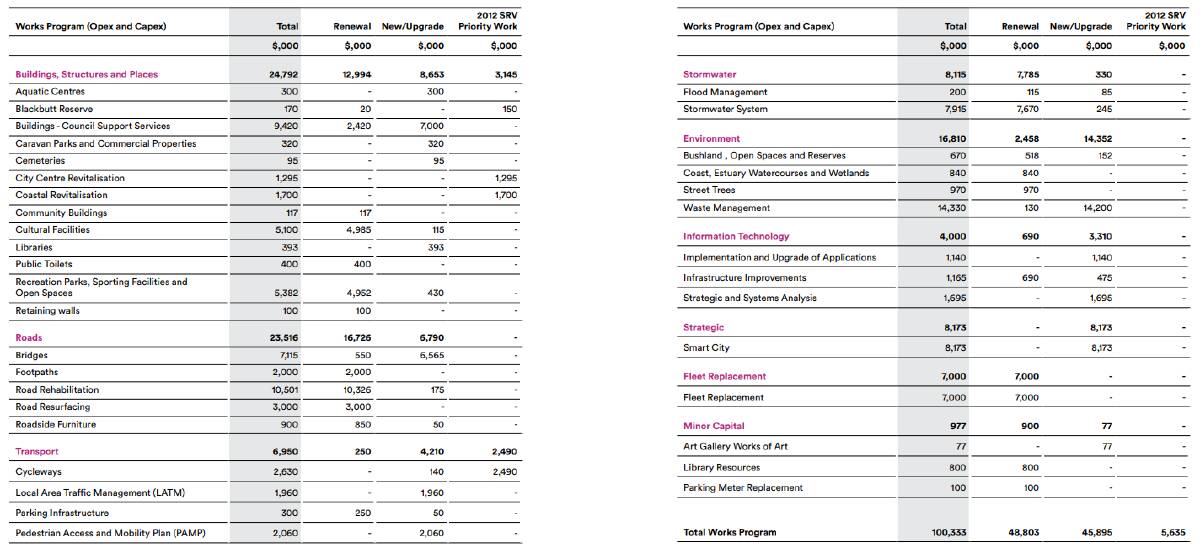Staff have warned Newcastle City Council to make a stronger commitment to addressing the infrastructure backlog it promised to cut when it applied successfully for a five-year, 46.9 per cent rate rise in 2015.
Subscribe now for unlimited access.
or signup to continue reading
Council officers said in the 2018-19 budget councillors approved this week that there was a “risk” of insufficiently reducing the backlog.
The budget contains a record $100 million works program for the year, including $7 million to fit out the council’s new offices in Newcastle West, $6 million over three years on South Newcastle beach skate park, $8.1 million for the Smart Cities program and $8 million on a solar farm at Summerhill Waste Centre.
It includes $5.3 million for playground and grandstand upgrades, $7 million for bridges, including raising Wallsend’s Tyrrell Street bridge to avoid flooding, $13.5 million for road rehabilitation and resurfacing, $2 million for footpaths, $2.6 million for cycleways, and almost $8 million for stormwater upgrades.
But, despite the generous works program, the budget forecasts that the council’s infrastructure backlog ratio, a measure of how much it needs to spend to repair and maintain roads, footpaths and other basic infrastructure, will rise from more than 10 per cent in 2018 to 14 per cent in 2022 and 13 per cent in 2026, significantly above the “less than 2 per cent over the next 10 years” contained in its successful 2015 application to the Independent Pricing and Regulatory Tribunal for the special rate variation.
“The key risk remains the backlog in council’s infrastructure assets,” the budget warns. “It is forecast that council’s reserves are insufficient to meet the current and future commitments including this infrastructure backlog and reserves remain in deficit over the duration of the forecast.
“IPART has a prescribed level of asset backlog of 2% of infrastructure assets written-down value for all councils. Newcastle council’s level currently measures 10% and with the existing asset renewal expenditure anticipated the backlog is not forecast to fall below 8%. It is therefore essential council returns to a strong commitment to direct resources towards the renewal of infrastructure assets.”
It describes the backlog ratio as an “extremely important sustainability metric for council”.
The ratio, according to a “conservative” estimate in the budget, is not forecast to fall below 11 per cent until 2030. Even an “optimistic” scenario does not predict the ratio to approach 8 per cent until 2030.
Lord mayor Nuatali Nelmes said the budget included a mix of “new and renewal” projects, including the solar farm, which would cut the council’s electricity costs by $350,000 a year.
”Newcastle is NSW's second oldest city, and so it should come as no surprise that we have many ageing assets. However, just because an asset is several decades old doesn’t mean it needs to be replaced or repaired this year or next,” she said. “This council is committed to financial responsibility and, as such, we invest into the city what we can afford. IPART’s target of two per cent is just that, an arbitrary target.
“Council could address the infrastructure backlog more quickly, but it would be at the expense of crucial new investment such as the Bathers Way, playgrounds, sporting equipment and smart city technology.
“Funds from special rates variations have restrictions on how they can be spent. Part is for addressing council’s infrastructure backlog, but much is for replacing bus shelters, improving Blackbutt Reserve, increasing cycleways and better maintaining our roads.
“For some of our older assets, such as the Newcastle Ocean Baths, the cost is such that each year we reserve some funds until we have the money to complete the work.”
She said half of the capital works budget would be spent on renewing assets.
“However, every year as we renew assets and remove them from the infrastructure backlog, others come onto the list. It’s a never-ending effort exacerbated by living in Australia’s second oldest city with a commitment to preserving many of our older assets.”
IPART’s 2015 ruling said the rate rise would generate an extra $283.6 million over 10 years.
“The council intends to use the additional revenue from the special variation to achieve financial sustainability, maintain and enhance existing services, address infrastructure backlogs, and fund a program of asset renewal and some new capital expenditure,” IPART said when granting the rate rise.
The extra money would be used, in part, to “maintain and renew key assets – such as roads, footpaths, cycle ways and public spaces”.
The rise, about 5.6 per cent above the standard rate peg each year, amounted to an extra $86 in average rates in 2015-16 and about $500 over five years. The cumulative increases are retained permanently in the council’s rates base.
“IPART has imposed conditions on Newcastle City Council requiring that the additional income be used for the purposes outlined in the application and that the council report to the community in its annual report each year until 2024-25 on the outcomes achieved,” the IPART ruling said.
Newcastle’s three independent councillors and Liberal Brad Luke raised concerns in March about the council’s spending priorities.
Cr John Church revisited the issue on Tuesday during debate over the budget, which contains a projected $6.5 million surplus.
“The budget papers confirm that funds are being diverted to a range of special and expensive new projects rather than the very important and fundamental work of repairs and maintenance of the city’s public assets,” he said. “Asset renewal was the reason people reluctantly accepted the five years of rate rises, and now we see the councillors not honouring that commitment.”
Cr Church said on Friday that he was not opposed to the projects in the budget if they were “affordable, funded and allow us to address the pressing maintenance issues which already exist”.
He said the community should be surveyed to determine a ranking of priorities.


